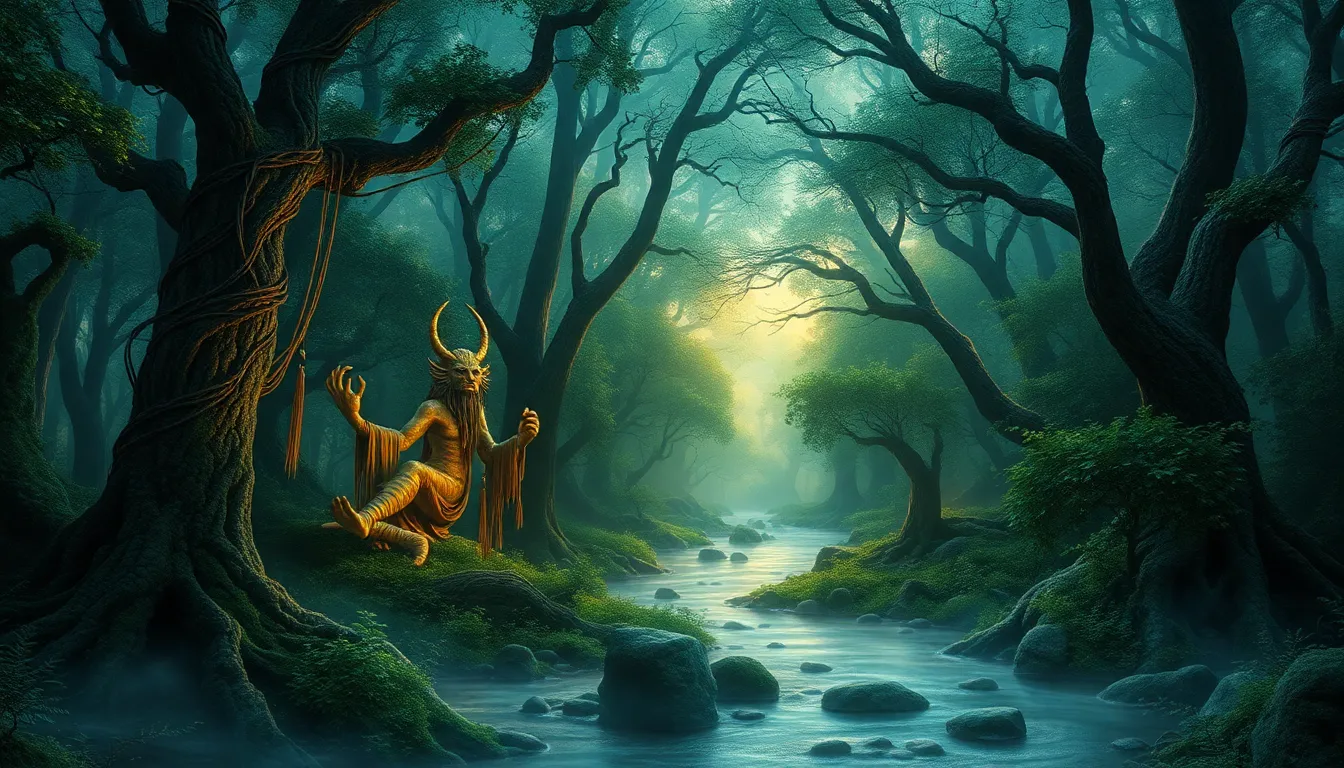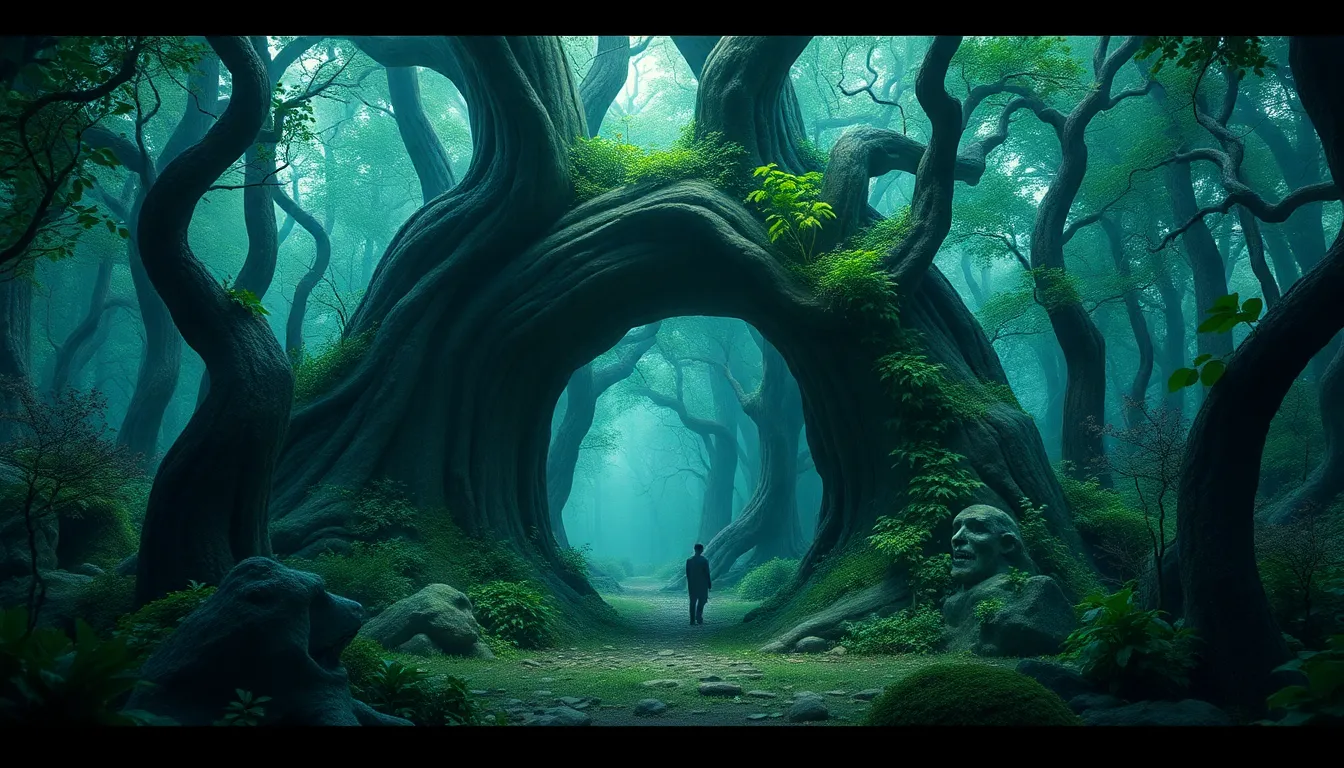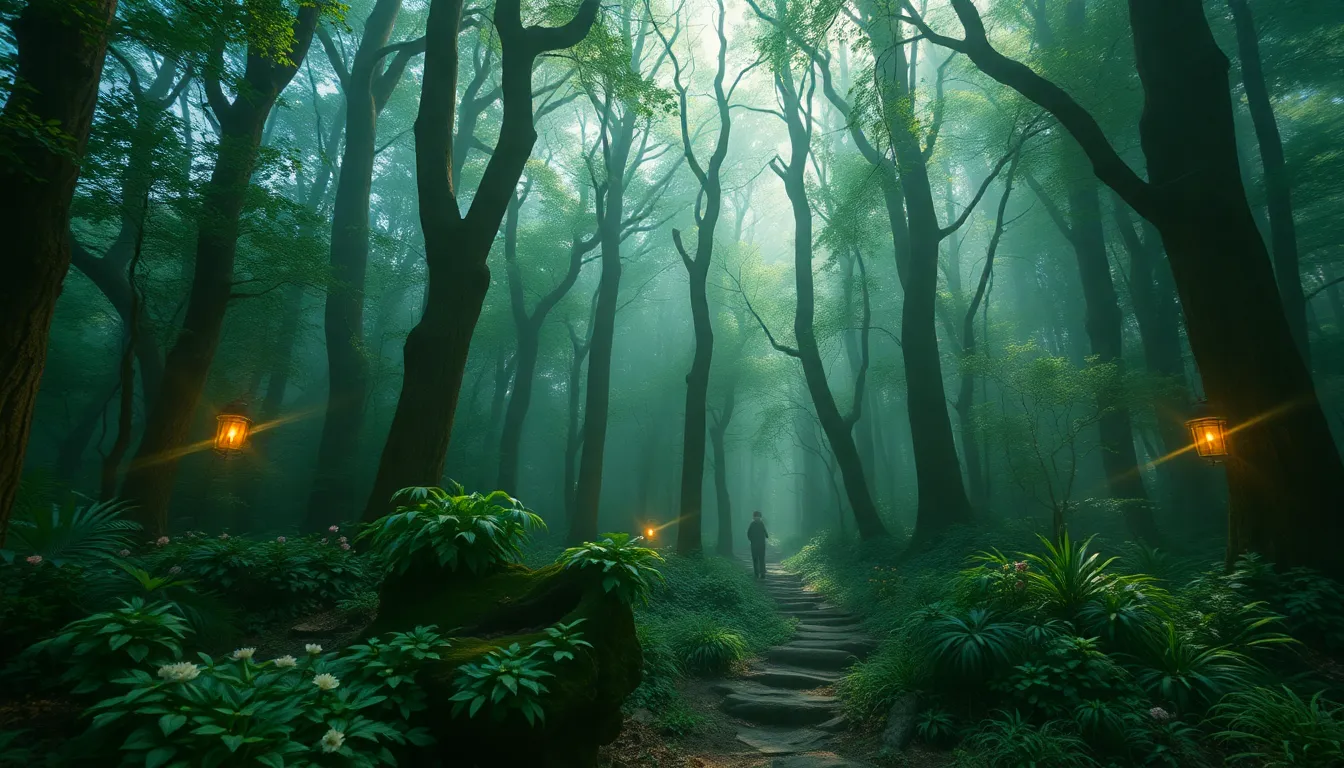The Magic of Enchanted Forests: More Than Just a Myth
Introduction: The Allure of Enchanted Forests
Enchanted forests have captivated the imaginations of people across cultures and generations. These mystical woodlands are often depicted as places where the ordinary meets the extraordinary, where nature transforms into a realm of wonder and magic. An enchanted forest is typically defined as a wooded area imbued with supernatural elements, inhabited by mystical creatures, or possessing a sense of mystery and adventure.
The historical and cultural significance of enchanted forests is profound, as they often represent the boundary between the known world and the unknown. Many ancient civilizations revered forests as sacred places, believing them to be the dwelling of gods, spirits, and mythological beings. From the lush woodlands of Europe to the dense jungles of the Americas, these forests have been integral to folklore and mythology, serving as settings for tales of heroism, transformation, and exploration.
In this article, we will explore the origins, beauty, psychological impact, and cultural significance of enchanted forests, revealing why they continue to inspire awe and intrigue in our modern world.
The Origins of Enchanted Forests in Mythology
Enchanted forests have their roots in ancient tales from various cultures around the globe. These narratives often revolve around the supernatural qualities of these woodlands, where the laws of nature can be bent, and extraordinary beings reside. In Greek mythology, for instance, the forest was a domain of nymphs and satyrs, while Norse mythology spoke of Yggdrasil, the World Tree, connecting different realms.
Notable mythological figures associated with forests include:
- Diana/Artemis: The Roman and Greek goddess of the hunt, often depicted in forest settings.
- Pan: The Greek god of the wild, known for his connection to nature and rustic music.
- Woodland Spirits: Various cultures have their own representations of forest spirits, such as dryads in Greek mythology.
The role of enchanted forests in storytelling is significant. They serve as a backdrop for adventures, a place for characters to undergo transformation, or a setting for moral lessons. The themes of love, loss, and the struggle between good and evil frequently unfold amidst the trees, inviting readers and audiences to lose themselves in their mysteries.
The Natural Beauty: Real Enchanted Forests Around the World
While the concept of enchanted forests often leans towards the mythical, many real-life forests inspire the same sense of wonder:
- The Black Forest, Germany: Known for its dense, dark woodlands and fairytale charm, this forest is steeped in folklore.
- The Forest of Dean, England: A site of ancient woodlands, it is known for its diverse wildlife and stunning scenery.
- The Bamboo Forest, Japan: A serene and picturesque forest, where towering bamboo stalks create an ethereal atmosphere.
These forests are characterized by unique flora and fauna, contributing to their magical reputation. From the towering trees to the delicate flowers, every element plays a role in creating an enchanting environment that captures the imagination.
The Psychological Impact of Forests on Humans
The concept of biophilia, which suggests that humans have an inherent connection to nature, highlights the psychological benefits of spending time in natural settings. Research has shown that immersion in nature can reduce stress, enhance mood, and promote overall well-being.
Benefits of spending time in enchanted forests include:
- Improved mental clarity and focus.
- Increased creativity and inspiration.
- A sense of peace and tranquility.
Enchanted forests, with their serene beauty and rich biodiversity, are particularly effective at inspiring wonder and creativity, encouraging individuals to explore their imaginations and connect with the world around them.
Enchanted Forests in Literature and Film
Enchanted forests have been a staple in literature and film throughout history. Classic tales like “Hansel and Gretel” and “The Chronicles of Narnia” feature magical woods that serve as pivotal settings for the characters’ journeys. Contemporary works, such as “The Lord of the Rings” and Disney’s “Into the Woods,” also explore these fantastical landscapes.
Common themes and motifs found in these stories include:
- The journey of self-discovery.
- Confrontation with fears and challenges.
- The coexistence of beauty and danger.
The impact of these narratives on popular culture is profound, shaping our perceptions of nature and the enchantment that it holds. Through these stories, enchanted forests become symbols of hope, adventure, and the unknown.
The Role of Enchanted Forests in Eco-Tourism
Enchanted forests attract tourists seeking adventure, tranquility, and a connection with nature, contributing significantly to local economies. Eco-tourism initiatives focused on these magical environments promote sustainable practices while preserving the natural beauty of these areas.
Economic benefits of eco-tourism include:
- Job creation in local communities.
- Increased funding for conservation efforts.
- Promotion of cultural heritage and local traditions.
Case studies of successful eco-tourism initiatives demonstrate that with the right approach, enchanted forests can be preserved while providing visitors with unforgettable experiences.
The Biodiversity of Enchanted Forests
Biodiversity plays a crucial role in maintaining healthy ecosystems, and enchanted forests are often home to a wide variety of species. The unique conditions of these forests support numerous plants, animals, and microorganisms, contributing to their mythic qualities.
Unique species found in enchanted forests may include:
- Rare orchids and other unique plants.
- Endangered species of animals that thrive in forested environments.
- Specialized insects and fungi that contribute to the forest’s health.
Conservation efforts are essential to protect these species and their habitats, ensuring that the magic of enchanted forests endures for future generations.
Modern-Day Enchantments: Urban Forests and Green Spaces
The rise of urban forests and green spaces in city planning has transformed concrete jungles into oases of nature. These areas serve as vital lungs for cities, providing residents with a slice of the natural world amidst urban life.
Creating magical green spaces involves:
- Incorporating native plants to support local wildlife.
- Designing spaces that encourage community engagement and interaction.
- Promoting environmental education through guided tours and workshops.
Community initiatives aimed at enhancing urban forest experiences foster a sense of connection and appreciation for nature, making enchanted forests accessible to everyone.
Exploring the Mystical Elements of Enchanted Forests
Folklore beings such as fairies, elves, and other mystical creatures are often associated with enchanted forests. These beings symbolize the unknown and the mystery of nature, inviting exploration and curiosity.
The significance of magical elements, such as portals and hidden realms, reflects human emotions and experiences. These elements may represent:
- The journey into the subconscious or the unknown.
- Transitions in life, such as coming of age or facing challenges.
- The interplay between reality and imagination.
Through these mystical elements, enchanted forests become powerful symbols of human experience, connecting us to our deepest fears and desires.
Conclusion: The Enduring Legacy of Enchanted Forests
Enchanted forests continue to inspire wonder and fascination, bridging the gap between myth and reality. Their rich histories, breathtaking beauty, and profound psychological impacts make them vital to our cultural and ecological landscapes. As we explore and protect these magical realms, we ensure that their legacy endures, inviting generations to come to experience the enchantment of the natural world.



